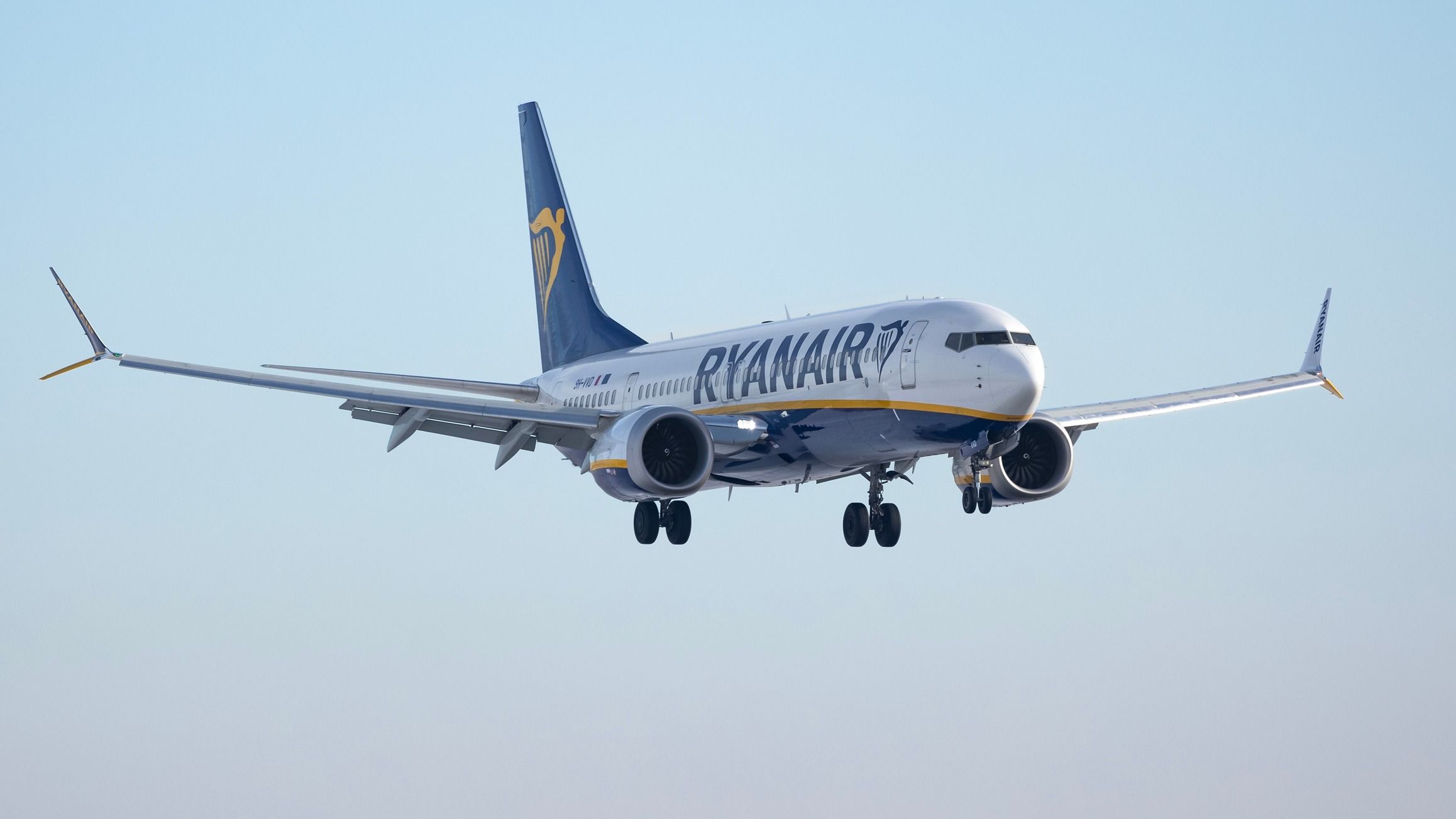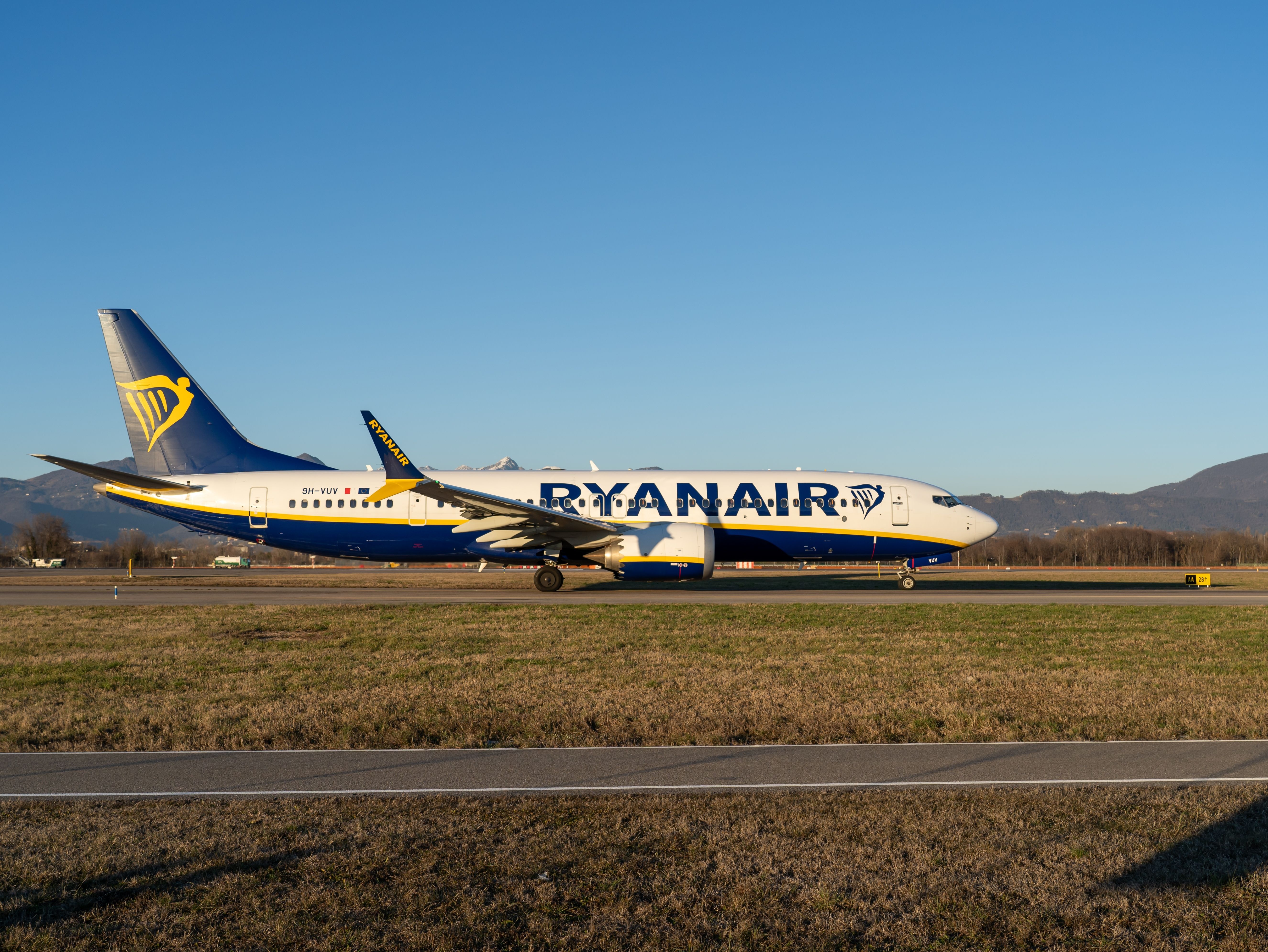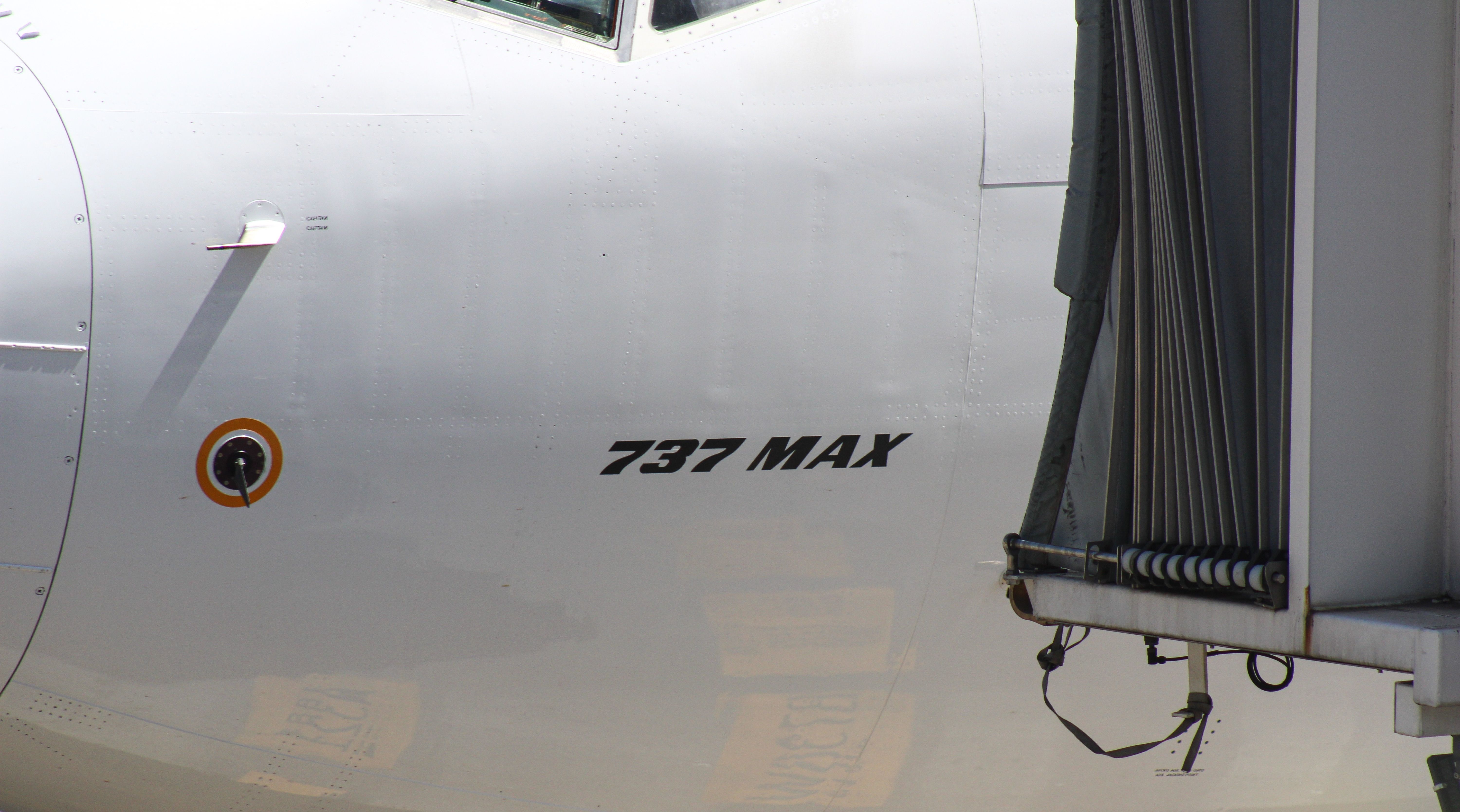Summary
- The United Kingdom Air Accidents Investigation Branch (AAIB) has been investigating an incident involving a Ryanair Boeing 737 MAX 8-200.
- The incident occurred on Dec 4, 2023, when the aircraft was operating a flight between Klagenfurt Airport (KLU) and London Stansted Airport (STN).
- While the AAIB has said that it was still investigating the incident, it detailed that the event involved the aircraft having a high-speed and high dose-down pitch attitude during a go-around at STN.
The United Kingdom Air Accidents Investigation Branch (AAIB) has confirmed that it has begun an investigation into a high-speed and high nose-down pitch attitude during a go-around involving a Ryanair Boeing 737 MAX 8-200.
High nose-down pitch attitude
The AAIB has only confirmed that it was investigating the incident, which occurred on December 4, 2023. At the time, a Ryanair Boeing 737 MAX 8-200, registered as EI-HET, was operating flight FR1269 from Klagenfurt Airport (KLU) to London Stansted Airport (STN).
During its initial approach at STN, the Ryanair flight crew initiated a go-around, and as it descended to an initial altitude of 2,300 feet (701 meters) at 11:03 local time (UTC +0), the Boeing 737 MAX 8-200 began climbing once again. However, while it climbed to an altitude of 4,425 ft (1,348 m) at 11:04:09, the aircraft suddenly lost altitude.
Flightradar24 records showed that at 11:04:20, the Boeing 737 MAX 8-200 descended to 3,250 ft (990.6 m), dropping further to 2,450 ft (746.7 m) at 11:04:54. During the same 45-second period, the aircraft’s ground speed increased to 197 knots (11:04:09), 249 knots (11:04:20), and 246 knots (11:04:54).
What Is A Go Around And Why Do They Occur?
Taken out of service
Its peak ground speed was 277 knots at 11:04:35. Eventually, the aircraft stabilized at 3,000 ft (914 m) and initiated a second approach at STN. The Ryanair Boeing 737 MAX 8-200 landed at STN at 11:14 and proceeded to taxi to the gate area.
Photo: MC MEDIASTUDIO | Shutterstock
The flight tracking site’s data indicated that Ryanair took the aircraft out of service for two days. The Boeing 737 MAX 8-200’s next flight was on December 6, 2023, when it operated the return itinerary FR286/FR285 from STN to Palanga Airport (PLQ).
On the following day, the Irish low-cost carrier used the aircraft to operate four flights, all of which landed in Ireland, namely Dublin Airport (DUB) and Knock Ireland West Airport (NOC). Its final flight of the day was from DUB to STN.
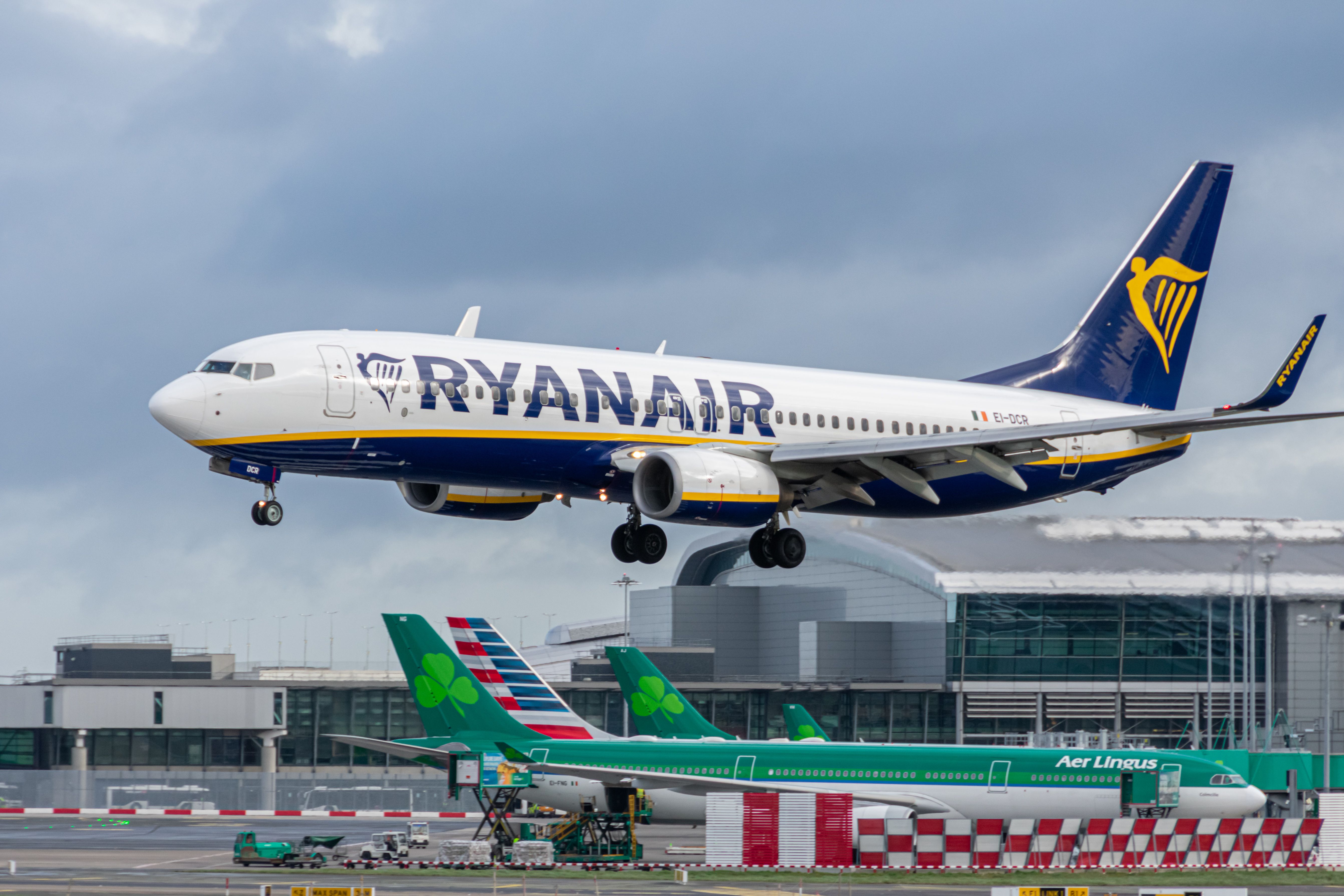
Related
Ryanair Says Traffic Cap At Dublin Airport Has Blocked Over 1 Million Seats This Winter
Dublin Airport (DUB)-based airlines have repeatedly criticized the passenger cap that will be imposed during the upcoming winter season.
MCAS activation conditions
During both fatal Boeing 737 MAX 8 crashes in Indonesia and Ethiopia, involving Lion Air and Ethiopia Airlines aircraft of the type, the aircraft’s onboard computer had activated the infamous Maneuvering Characteristics Augmentation System (MCAS).
However, the high nose-down attitude event during the Ryanair Boeing 737 MAX 8-200 incident could have been caused by other factors other than MCAS, including weather. According to STN’s meteorological aerodrome report (METAR) at 11:20 local time, the wind, which had speeds of up to 9 knots, had a variable direction between 090 and 150, with light rain being present at the airport at the time.
Photo: Unaccompanied Media | Shutterstock
The system, which was implemented during the 737 MAX 8’s development, was put in place to enhance the pitch stability of the aircraft during specific flight conditions so that “it feels and flies like other 737s.” As a result, airlines initially avoided costly pilot training courses for flight crews transitioning from the 737 Next Generation (NG) to the 737 MAX. Three conditions need to be present for the onboard computer to activate MCAS: the pilots must be flying the aircraft manually, the aircraft’s flaps must be up, and the aircraft must be at an elevated angle of attack (AoA).
While initially, MCAS relied on a single AoA sensor, the two fatal accidents resulted in Boeing installing additional layers of protection, including the system using data from both sensors, with MCAS not firing off if both sensors’ data disagrees by 5.5 degrees or more. Furthermore, if MCAS were activated in non-normal conditions, it would only provide one input, with no known or envisioned failure conditions where the system would provide multiple inputs. Lastly, MCAS cannot command more stabilizer input than the pilots can counteract by pulling back the column, with the flight crews always having the ability to override MCAS.
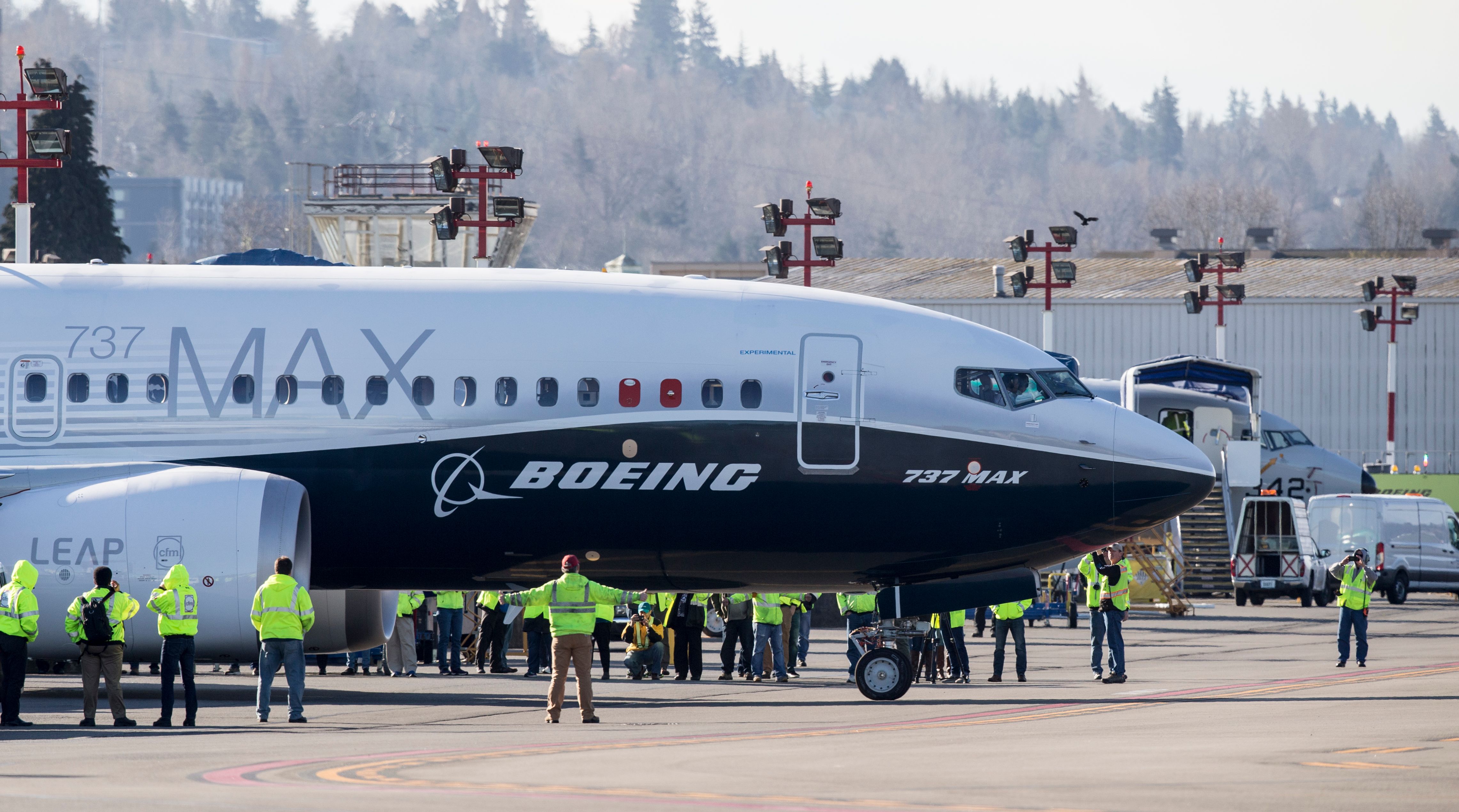
Related
US Watchdog Will Scrutinize FAA Oversight Of MCAS On Boeing 737 MAX
Yet another review into the FAA’s conduct during the 737 MAX’s development.

